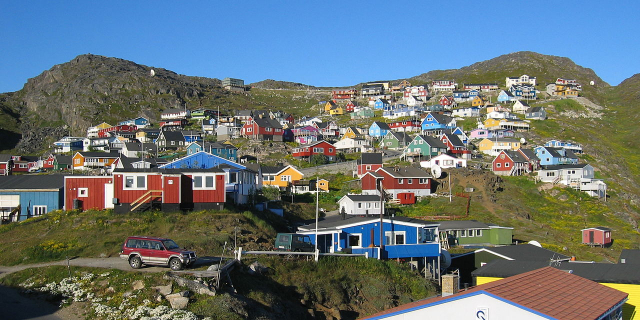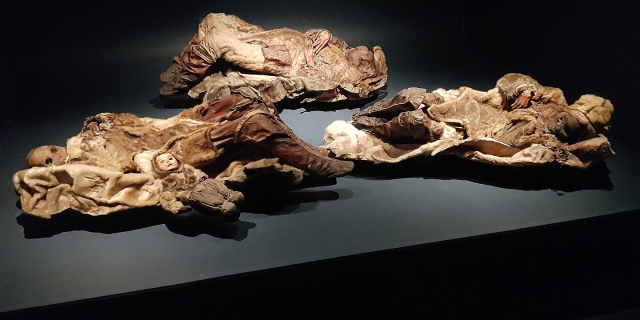Narsaq
Narsaq is a town in the Kujalleq municipality in southern Greenland. The name Narsaq is Kalaallisut for "Plain", referring to the shore of Tunulliarfik Fjord where the town is located.
People have lived in the area for thousands of years, but not continuously. Remains of the Norse settlement can be found in the area. The church ruins of Dyrnæs can be found on the north-western outskirts of the town. The Landnám homestead, Landnamsgaarden, can be found immediately to the west of the town.[1] Dated to the year 1000, the homestead is among the oldest of the Norse ruins in the area. Excavation of the ruins began in 1953 with the discovery of the Narsaq stick, the first Viking Age runic inscription discovered in Greenland. The wider Narsaq area has some of the most striking Norse artifacts and ruins. Erik the Red's Brattahlid is located in present-day Qassiarsuk, and the Gardar bishop seat is in present-day Igaliku.
Present day Narsaq was founded as Nordprøven ("North Prøven") in 1830,[2] distinguishing it from Sydprøven ("South Prøven", modern Alluitsup Paa) established the same year. The initial settlement was founded as a trading colony of Qaqortoq, then named Julianehaab.
A trading center was established here due to the natural deep water harbor which could accommodate ocean faring vessels, . Initially local seal hunters traded blubber and seal skin for continental goods, such as coffee, sugar, bread and buckwheat.
Until approximately 1900 seal hunting formed the main economy for Narsaq. In the early 1900s seal hunting began to fail, and the main basis for the economy gradually shifted to fishing. The city's historical fishing village is from 1914. The main house of the historical village today houses the power company in the city.
Simiutak at the Skovfjord mouth near Narsaq was a HF/DF radio range finding station called Bluie West Three during World War II. The station commenced operations in January 1942, and was permanently staffed until the end of the war.
The population also increased during this period, from 25 in 1870, to 162 in 1919, and to 300 in 1930. However the settlement did not experience significant population growth until 1953, when its first prawn and fishing factory of Royal Greenland was established. The factory was subsequently closed in 2010.[3]
In 1959 the population exceeded 600, and Narsaq achieved town status,.[2] With 1,346 inhabitants as of 2020,[4] it is the ninth-largest town in Greenland. Several hundred people live in the surrounding community.
The town is notable for the 1990 Narsaq massacre, a mass shooting where seven people were killed and one was wounded. The shooting was the worst in Greenland's history.
Until December 31, 2008, the town was the administrative center of Narsaq Municipality in the Kitaa amt. In addition to the town, the municipality consisted of the Qassiarsuk, Igaliku and Narsarsuaq settlements, as well as several sheep and reindeer farms. On January 1, 2009, Narsaq became part of Kujalleq municipality, when the Kitaa amt, as well as the municipalities of Narsaq, Qaqortoq, and Nanortalik ceased to exist as administrative entities.








Add new comment